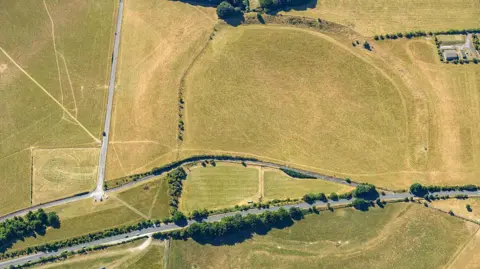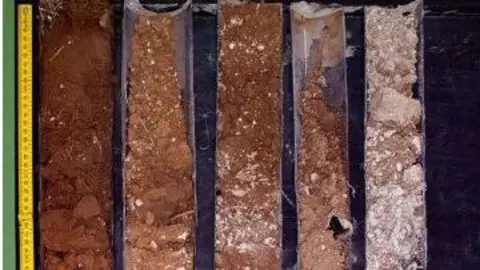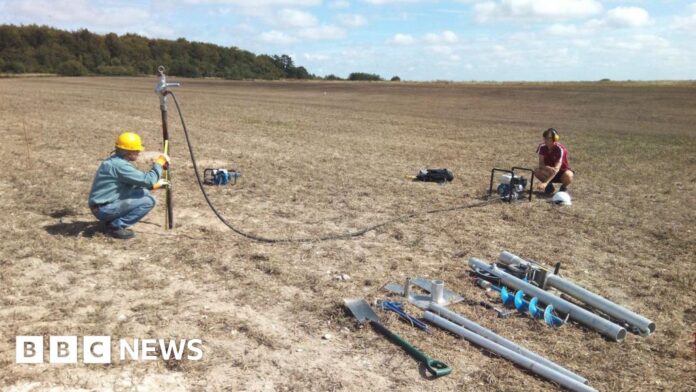 Internet Archaeology journal
Internet Archaeology journalThe discovery of a series of huge Neolithic pits have been confirmed at the Stonehenge World Heritage Site after initial research a few years ago.
The massive pits at Durrington Walls in Wiltshire are set at regular intervals, ten metres in diameter and more than five metres deep.
Professor Vince Gaffney said that as a “cohesive structure” they could be “one of the largest prehistoric structures in Britain, if not the largest prehistoric structure”.
The new research has been published in the Internet Archaeology Journal and concludes pits are almost certainly man-made and more than 4,000 years old.
 Historic England Archive/Heritage Images via Getty Images
Historic England Archive/Heritage Images via Getty ImagesProf Gaffney, from the University of Bradford, explained it would have taken a lot of effort to dig the holes – around two storeys deep – from the chalk landscape.
The horseshoe-shaped pits also link to another monument near Larkhill.
“The circle is pretty accurate. It suggests that people were pacing the distances out to make sure that the pits were aligned at the same distance all the way around as the distance from the henge to the earlier enclosure” he said.
Prof Gaffney said it added to previous evidence that people were counting and applying it.
“They’re inscribing something about their cosmology, their belief systems, into the earth itself in a very dramatic way.”
Researchers had surveyed 12 sq km (7.4 sq m) of the landscape when they spotted the giant holes.
No longer visible to the naked eye and too big to realistically excavate very quickly, they made narrow boreholes to take samples of the material from the features.
 Internet Archaeology journal
Internet Archaeology journalDNA extracted from the samples revealed remains of animals, including sheep and cattle.
The samples also helped experts date the excavations.
Dr Tim Kinnaird from the University of St Andrews called it a “super henge” and used a method called luminescence dating: “So just before that sediment falls into the pit, it’s exposed to daylight, so we can date the time of construction.”
It also revealed they were kept open for 1,000 years: “So that spans changing cultures,” he explained.




